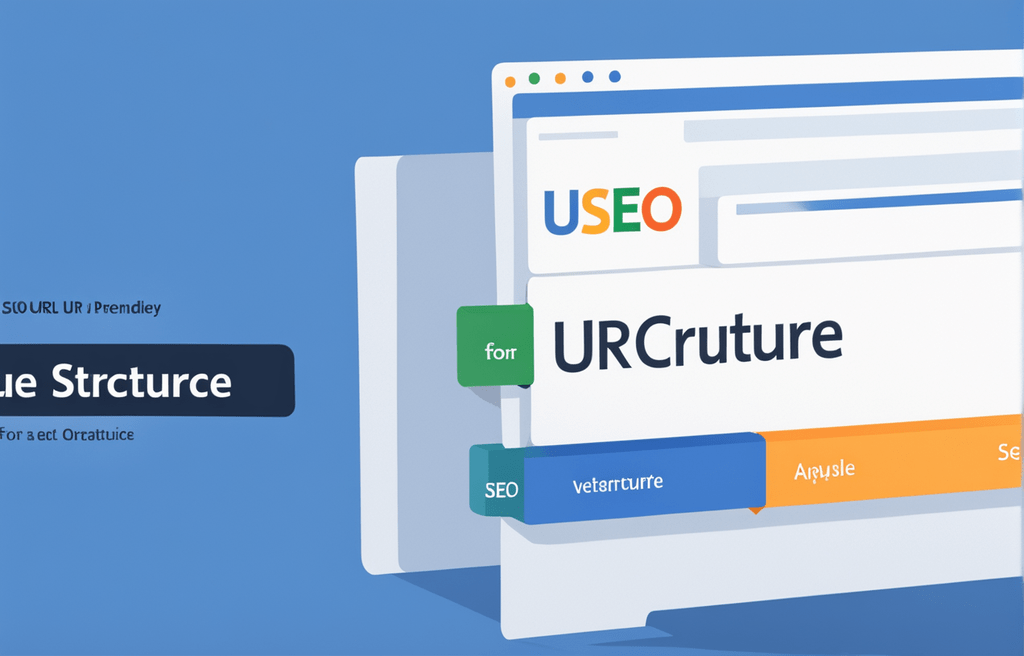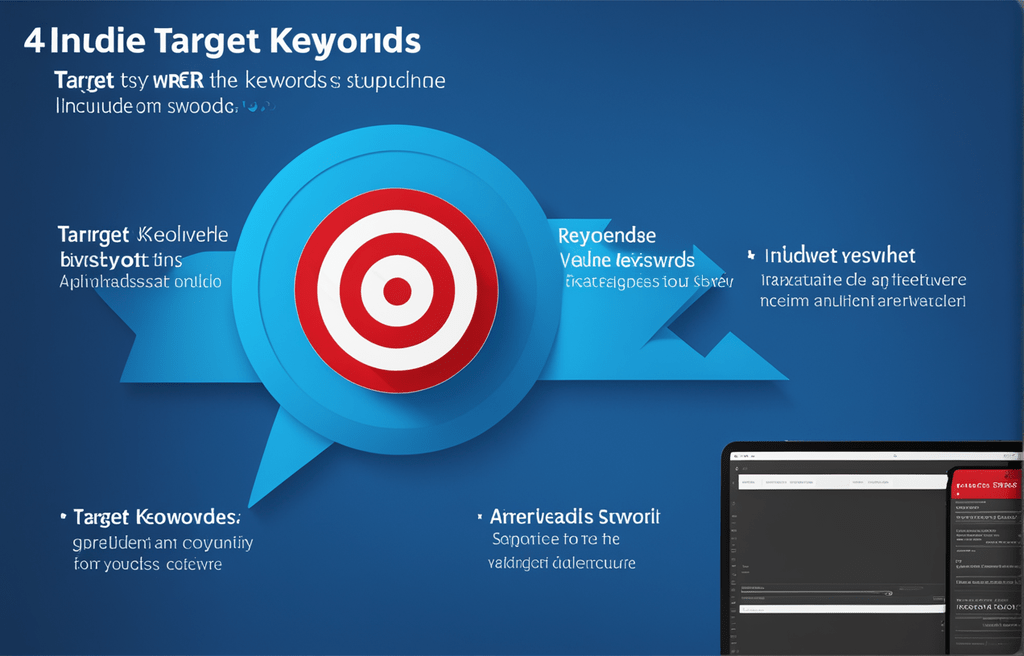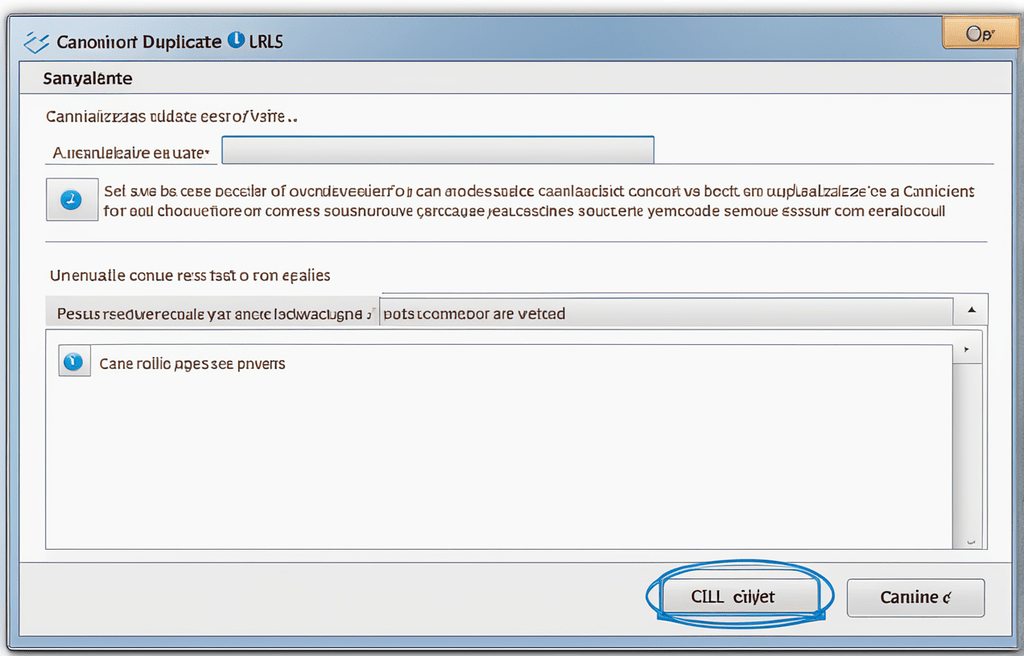
The best Creating SEO-Friendly URLs Best Practices for URL Structure 2023

Introduction
URLs play a vital role in Search Engine Optimization (SEO) as they provide valuable information to search engines and users about the content of a web page Creating SEO-friendly URLs is essential for improving your website’s visibility in search results and enhancing user experience In this article, we will explore the best practices for URL structure to optimize your website’s SEO performance
1 Keep URLs Simple and Descriptive
Craft URLs that are simple, concise, and descriptive of the page’s content Avoid using unnecessary characters, numbers, or special symbols Use relevant keywords to provide a clear indication of what the page is about
Clarity in Structure:
1.1 Readable Elements:
- Craft URLs that are easily readable and comprehensible. Users should be able to quickly grasp the content or purpose of a page by glancing at its URL.
1.2 Avoid Special Characters:
- Minimize the use of special characters, symbols, or unnecessary parameters in your URLs. Stick to alphanumeric characters and hyphens for a clean and user-friendly appearance.
2. Use Keywords Strategically:
2.1 Incorporate Relevant Keywords:
- Include relevant keywords in your URL to provide both users and search engines with a clear indication of the content’s focus. This helps improve SEO and boosts the visibility of your pages.
2.2 Logical Hierarchy:
- Reflect the logical hierarchy of your content in the URL structure. Users should be able to understand the relationship between different sections of your website by examining the URL.
3. Keep It Concise:
3.1 Trim Unnecessary Elements:
- Trim any unnecessary elements from your URLs. Long and convoluted URLs can be confusing and are less likely to be remembered by users.
3.2 Focus on Core Information:
- Prioritize the inclusion of core information in your URLs. Aim to convey the essence of the page in a concise manner without overloading it with details.
4. Consistency Across Site:
4.1 Uniformity in Structure:
- Maintain consistency in URL structure across your website. A standardized approach makes navigation intuitive for users and contributes to a cohesive overall user experience.
4.2 Avoid URL Variations:
- Minimize the use of multiple variations of URLs pointing to the same content. This helps prevent duplicate content issues and ensures a unified representation in search engine indexes.
5. Readable for Humans:
5.1 Natural Language:
- Structure your URLs in a way that mirrors natural language. Use hyphens to separate words, creating a URL that is easy to read and understand.
5.2 Avoid URL Parameters:
- Minimize the use of URL parameters, especially those with strings of numbers or characters. Opt for descriptive terms that convey the purpose or content of the page.
6. URL Mapping:
6.1 Logical Navigation:
- Map your URLs logically to the structure of your site. Each segment of the URL should correspond to a navigational level, making it intuitive for users to predict the page’s location.
6.2 Reflect Content Hierarchy:
- If your website has a hierarchical structure, reflect this hierarchy in your URLs. This helps users understand the context of the page within the broader content framework.
7. Test for User-Friendliness:
7.1 User Testing:
- Conduct user testing to evaluate the user-friendliness of your URLs. Gather feedback on whether users find the URLs clear, descriptive, and easy to remember.
7.2 Mobile Optimization:
- Ensure that your URLs are optimized for mobile users. Short, descriptive URLs contribute to a smoother mobile browsing experience
2 Use Hyphens to Separate Words
When including multiple words in the URL, use hyphens to separate them Hyphens are more search engine-friendly than underscores or spaces, as search engines recognize hyphens as word separators
3 Avoid Stop Words
Avoid using stop words like “a,” “an,” “the,” “in,” “for,” and other common words that add little value to the URL Keep URLs focused on essential keywords to improve their relevance and search visibility
. Enhancing Readability:
1.1 Simplify Sentence Structure:
- By eliminating unnecessary stop words, you simplify sentence structures, making your content more digestible and reader-friendly.
1.2 Clearer Expression:
- Removing stop words allows your core message to shine. It enables clearer expression and ensures that readers grasp the essence of your content without distractions.
2. Improved SEO Performance:
2.1 Keyword Density:
- Reducing stop words often leads to a higher keyword density, which can contribute to improved search engine optimization (SEO). Search engines may give more weight to keywords in the absence of unnecessary stop words.
2.2 Relevance to Queries:
- Search engines strive to deliver relevant results to user queries. By minimizing stop words, your content may align more closely with the specific terms users input in search queries.
3. Concise Messaging:
3.1 Precision in Communication:
- Avoiding stop words encourages precision in communication. Each word serves a purpose, contributing directly to the overall meaning of your sentences.
3.2 Condensed Statements:
- Condensing your statements by removing stop words makes your content more impactful, ensuring that every word adds value to the narrative.
4. Engaging Headlines and Titles:
4.1 Punchy Headlines:
- When crafting headlines and titles, omitting stop words often results in punchier, more compelling statements that capture attention and encourage further reading.
4.2 Increased Click-Through Rates:
- Research suggests that concise, stop-word-free titles may have higher click-through rates, as they convey information quickly and directly to the reader.
5. Social Media Impact:
5.1 Tweetable Content:
- On social media platforms with character limits, avoiding stop words is particularly advantageous. It allows your content to be more “tweetable,” increasing the likelihood of shares and engagement.
5.2 Visual Appeal:
- Stop-word-free content tends to have a more visual appeal. It’s easy to skim, making it ideal for platforms where users quickly scroll through content.
6. Consistent Tone and Style:
6.1 Maintain Consistency:
- Removing stop words helps maintain a consistent tone and style throughout your content. It creates a cohesive reading experience that aligns with your brand’s voice.
6.2 Foster Connection:
- Consistency in language contributes to a stronger connection with your audience. Readers become familiar with your writing style, enhancing brand recognition.
7. Proofread for Precision:
7.1 Refine Your Content:
- After writing, proofread your content with a focus on eliminating unnecessary stop words. This refining process ensures that your message is as clear and concise as possible.
7.2 Enhance Flow:
- Removing stop words during proofreading can also enhance the flow of your content. It allows sentences to glide smoothly from one idea to the next.
4 Include Target Keywords
Incorporate target keywords in the URL that accurately represent the content of the page Relevant keywords in the URL can help search engines and users understand the page’s topic

5 Be Consistent with Your URL Structure
Maintain a consistent URL structure throughout your website This makes it easier for search engines to crawl and index your content, improving site navigation and user experience
User-Friendly Navigation:
1.1 Predictable Paths:
- A consistent URL structure provides users with predictable paths. When navigating your website, users can anticipate the structure of URLs, making it easier for them to find specific content.
1.2 Intuitive Experience:
- Consistency fosters an intuitive experience. Users can understand the relationship between different sections of your website based on the structure of the URLs, enhancing their overall navigation.
2. SEO Benefits:
2.1 Crawlability:
- Search engine crawlers rely on consistent URL structures to navigate and index your website efficiently. A uniform structure ensures that all relevant pages are crawled, contributing to better SEO performance.
2.2 Keyword Alignment:
- Consistent structures make it easier to incorporate relevant keywords into your URLs. Aligning URLs with targeted keywords enhances the relevance of your content for search engines.
3. Brand Identity:
3.1 Unified Representation:
- A consistent URL structure contributes to a unified representation of your brand online. It reflects a level of professionalism and organization, instilling confidence in your audience.
3.2 Brand Recognition:
- When users encounter consistent URLs across your web pages, it reinforces brand recognition. Uniformity in structure becomes a subtle but powerful element of your brand identity.
4. Logical Hierarchy:
4.1 Reflect Content Organization:
- The structure of your URLs should mirror the logical hierarchy of your content. This alignment aids users in understanding the context of a page within the broader content framework.
4.2 Easy Interpretation:
- A logical hierarchy makes it easy for both users and search engines to interpret the significance and relationships between different sections of your website.
5. Uniform URL Elements:
5.1 Domain Format:
- Keep the format of your domain consistent throughout your website. Decide whether you prefer using “www” or not, and stick to that choice for uniformity.
5.2 Trailing Slashes:
- Decide whether your URLs will include trailing slashes or not. Consistency in this small detail contributes to a polished and cohesive appearance.
6. URL Mapping:
6.1 Standardized Approach:
- Map your URLs in a standardized manner. Ensure that similar pages or content types follow the same structure, making it easy for users to predict the URL based on their familiarity with your website.
6.2 Avoid Variations:
- Minimize the use of variations in URL structures for similar content. This helps prevent confusion for both users and search engines.
7. Regular Audits and Updates:
7.1 Periodic Review:
- Conduct regular audits of your URL structure. Ensure that it aligns with your evolving content strategy and remains consistent with the organization of your website.
7.2 Adjustments for Changes:
- If your website undergoes structural changes or if new content is added, make necessary adjustments to maintain consistency in your URL structure.
6 Use Lowercase Letters
Consistently use lowercase letters in your URLs to avoid duplicate content issues caused by case sensitivity Uniform lowercase URLs are easier to share and remember

7 Avoid Dynamic Parameters
Minimize the use of dynamic parameters in URLs, such as question marks and session IDs Search engines may have difficulty indexing such URLs, leading to potential indexing and duplicate content issues
Readability and User-Friendly URLs:
1.1 Clear Communication:
- Dynamic parameters, often denoted by symbols like question marks and ampersands, can make URLs appear cluttered and challenging to read. Avoiding these dynamic elements results in cleaner, more user-friendly URLs.
1.2 Enhanced User Experience:
- Clear, concise URLs contribute to an enhanced user experience. Users can quickly interpret and remember static URLs, making navigation more intuitive and user-friendly.
2. SEO Challenges:
2.1 Crawling and Indexing:
- Search engines may encounter challenges when crawling and indexing pages with dynamic parameters. Static URLs are more favorable for search engines as they provide a clear indication of the page’s content.
2.2 Keyword Optimization:
- Dynamic parameters often result in URLs that lack meaningful keywords. By avoiding dynamic parameters, you create opportunities to incorporate relevant keywords into your URLs, bolstering your SEO strategy.
3. Improved Caching and Speed:
3.1 Browser Caching:
- Static URLs are more conducive to browser caching. Caching static content can improve page load times, enhancing the overall speed and performance of your website.
3.2 Content Delivery Networks (CDNs):
- Content Delivery Networks, which help deliver content quickly to users around the world, are more effective with static URLs. This ensures a seamless and speedy user experience.
4. Bookmarking and Sharing:
4.1 Ease of Bookmarking:
- Users find it easier to bookmark static URLs. Clear, static links are more likely to be shared and bookmarked, contributing to increased visibility and traffic.
4.2 Consistent URLs:
- Static URLs contribute to consistent links when shared across various platforms. This consistency is valuable for social media sharing and can positively impact click-through rates.
5. Analytics and Tracking:
5.1 Simplified Analytics:
- Static URLs simplify analytics tracking. It’s easier to analyze user behavior, track conversions, and extract insights when dealing with clear and consistent URLs.
5.2 Avoid Session Confusion:
- Dynamic parameters can sometimes lead to confusion in tracking sessions. Using static URLs minimizes the risk of session-related issues in analytics reporting.
6. URL Security:
6.1 Avoid Ambiguity:
- Dynamic parameters can sometimes introduce ambiguity, leading to security concerns. By using static URLs, you reduce the potential for security vulnerabilities associated with dynamic elements.
6.2 Prevent Manipulation:
- Static URLs are less susceptible to manipulation. Dynamic parameters can be altered, potentially leading to unintended actions or exposing sensitive information.
7. URL Redirection:
7.1 Easier Redirect Management:
- Redirects are more straightforward to manage with static URLs. When restructuring your website or making changes, static URLs ensure a smoother transition for users and search engines.
7.2 Prevent Duplicate Content:
- Dynamic parameters can sometimes result in duplicate content issues. Using static URLs helps prevent duplicate content, contributing to a healthier SEO profile.
8 Canonicalize Duplicate URLs
If you have multiple URLs with the same content (eg, variations due to parameters or tracking codes), implement canonicalization to indicate the preferred URL This prevents search engines from viewing duplicate URLs as separate pages

9 Consider the Depth of URL Structure
Keep your URL structure shallow whenever possible Shorter URLs with fewer subdirectories are more user-friendly and can improve search engine crawling efficiency
Clarity and User Understanding:
1.1 Concise Representation:
- Aim for a URL structure that provides a concise and clear representation of the content hierarchy on your website. Users should quickly understand the relationship between different sections based on the URL.
1.2 Intuitive Navigation:
- An intuitive URL structure facilitates easier navigation. Users should be able to predict the content of a page by examining its URL, fostering a positive and efficient browsing experience.
2. SEO Implications:
2.1 Crawlability:
- Search engines rely on crawlability to index your website effectively. A balanced URL structure contributes to the crawlability of your site, ensuring that search engine bots can navigate and index content efficiently.
2.2 Keyword Alignment:
- Consider how your URL structure aligns with targeted keywords. A well-organized structure allows for the incorporation of relevant keywords, enhancing the SEO relevance of your pages.
3. Consistency Across Sections:
3.1 Uniform Approach:
- Strive for consistency in the depth of your URL structure across different sections of your website. This consistency aids users in forming expectations and understanding the organization of your content.
3.2 Avoid Excessive Variations:
- While some variation may be necessary for different content types, avoid excessive variations in URL depth. Consistency contributes to a cohesive and predictable user experience.
4. Balance Between Depth and Brevity:
4.1 Depth for Organization:
- Use depth in your URL structure for organizational purposes. It allows you to create a logical hierarchy that mirrors the structure of your website’s content.
4.2 Brevity for Readability:
- Strive for brevity to maintain readability. While depth adds organization, overly long URLs can be cumbersome and may affect user comprehension.
5. Logical Hierarchy:
5.1 Reflect Content Organization:
- Ensure that the depth of your URL structure reflects the logical hierarchy of your content. This alignment aids both users and search engines in understanding the significance of each page.
5.2 Avoid Unnecessary Complexity:
- While hierarchy is essential, avoid unnecessary complexity. Each segment of your URL should serve a purpose in communicating the content’s position within the broader structure.
6. Mobile-Friendly Considerations:
6.1 Adaptability:
- Consider how your URL structure adapts to mobile devices. A concise and well-organized structure ensures a seamless transition between desktop and mobile platforms.
6.2 Responsive Design:
- Ensure that your website has a responsive design. This not only benefits the URL structure but also contributes to an overall positive user experience on various devices.
7. Regular Review and Adjustment:
7.1 Periodic Assessment:
- Periodically review the depth of your URL structure. Assess whether it aligns with the evolving content strategy and user expectations.
7.2 Adjust for Changes:
- If your website undergoes structural changes or if new content is added, make necessary adjustments to the depth of your URL structure to maintain coherence.
10 Update URLs for Content Changes
When updating or modifying content on a page, remember to update the corresponding URL to reflect the changes accurately Avoid broken links or outdated URLs that may negatively affect SEO
Conclusion
Creating SEO-friendly URLs is a fundamental aspect of optimizing your website for search engines and improving user experience Keep URLs simple, descriptive, and hyphenated, avoiding stop words and dynamic parameters Consistently use lowercase letters, maintain a consistent URL structure, and include target keywords Canonicalize duplicate URLs and ensure URL updates when modifying content By following these best practices, you can enhance your website’s SEO performance, increase its visibility in search results, and create a user-friendly online environment
